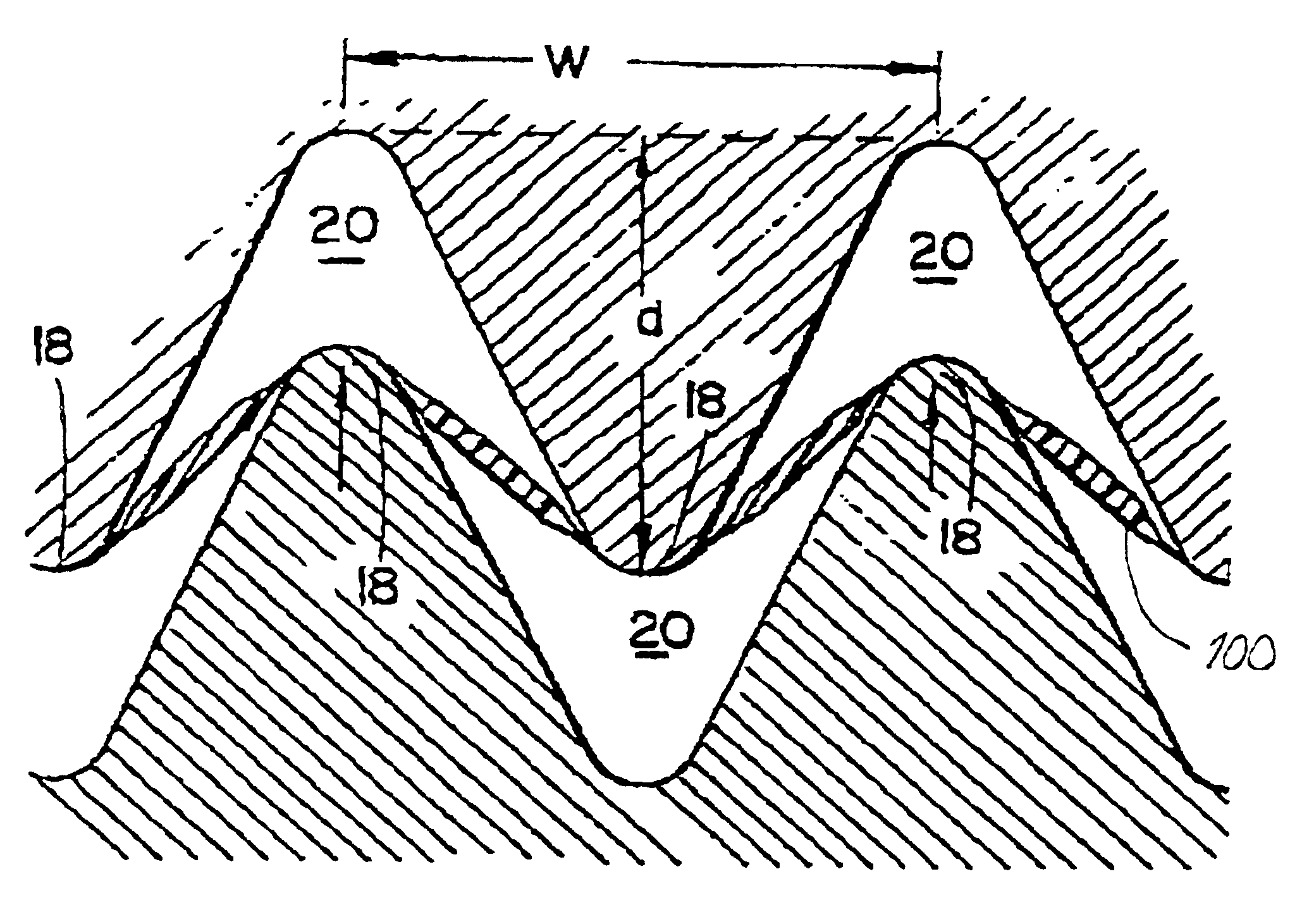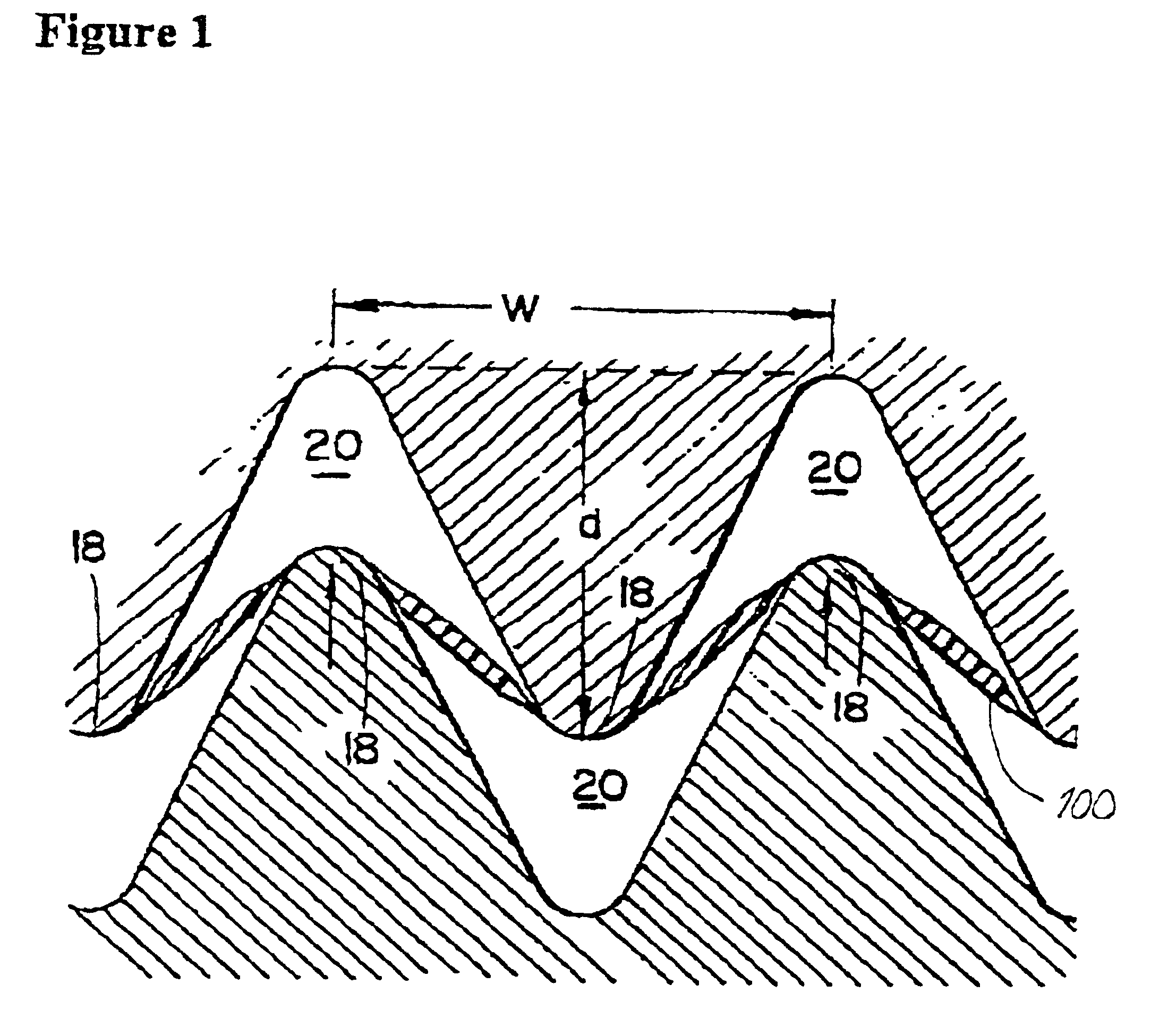Method of making microporous breathable film
a technology of breathable film and polyethylene, which is applied in the field of polyolefin microporous breathable film, can solve the problems of high cost of adhesive itself, high cost of heat lamination, and high cost of operating the laminating system, and achieves good dart impact, good tear strength, and soft film
- Summary
- Abstract
- Description
- Claims
- Application Information
AI Technical Summary
Benefits of technology
Problems solved by technology
Method used
Image
Examples
example 1
Experimental Grade 300-11-1
[0049]A blend of 52% ECC FilmLink 400 CaCO3 was combined with 48% Exxon PD 7623 Impact Copolymer Polypropylene. The film was oriented off line with interdigitating rolls of 0.100″ pitch. The MD depth of engagement was 0.030″, and the TD depth of engagement was 0.019″.
example 2
Experimental Grade 400-4-1
[0050]A blend of 52% ECC FilmLink 400 CaCO3 was combined with 40% Exxon PD 7623 Impact Copolymer, 2% Exxon LD-200.48, 6% Exxon SLX9101. The film was oriented in interdigitating rolls of 0.080″ pitch. The MD depth of engagement was 0.028″, and the TD depth of engagement was 0.034″.
example 3
Experimental Grade 500-9-3
[0051]A blend of 55% ECC FilmLink 400 CaCO3 was combined with 31% Exxon PD 7623 Impact Copolymer, 4% Exxon LD-200.48, 2% Ampacet 110131 TiO2, concentrate, and 8% Exxon Exact 3131. The film was oriented in interdigitating rolls of 0.080″ pitch. The MD depth of engagement was 0.021″, and the TD depth of engagement was 0.037″.
[0052]The following table demonstrates the absolute values of tear strength and dart impact strength of the film produced in three examples.
[0053]
Table of Example Film PropertiesExample 1Example 2Example 3Grade Number300-11-1400-4-1500-9-3Basis Weight (gm / sqm)41.040.640.3WVTR (gm / sqm / day)145714621400Dart Impact Strength (gm)210315315MD Ultimate (gm / in)625609604MD Elongation (%)423482448TD @ 5% (gm / in)231151140TD Ultimate (gm / in)367501440TD Elongation (%)410464398Light Transmission (%)454339MD Elmendorf Tear Strength (gm)79195198
[0054]Based on the foregoing, the films produced by the disclosed method have physical properties as described b...
PUM
| Property | Measurement | Unit |
|---|---|---|
| TD elongation | aaaaa | aaaaa |
| free shrink | aaaaa | aaaaa |
| densities | aaaaa | aaaaa |
Abstract
Description
Claims
Application Information
 Login to View More
Login to View More - R&D
- Intellectual Property
- Life Sciences
- Materials
- Tech Scout
- Unparalleled Data Quality
- Higher Quality Content
- 60% Fewer Hallucinations
Browse by: Latest US Patents, China's latest patents, Technical Efficacy Thesaurus, Application Domain, Technology Topic, Popular Technical Reports.
© 2025 PatSnap. All rights reserved.Legal|Privacy policy|Modern Slavery Act Transparency Statement|Sitemap|About US| Contact US: help@patsnap.com



